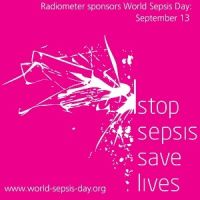“Studies
continue to show that guiding antibiotic therapy based on the dynamics of PCT
levels in the blood will reduce not only the use of antibiotics but also the
length of stay, hereby lowering hospital costs significantly" - an
interview with Jordi Trafi.
Sepsis can easily escalate to the life-threatening
condition septic shock which has a mortality rate of about 40 %. In most cases,
patients expire during intensive treatment in the ICU, after a long fight
against the infection and a constantly decreasing function of vital organs.
Patients with septic shock
have a high ICU mortality rate and long ICU length of stay and are
substantially expensive to treat. It’s especially these
days of intensive treatment of sepsis in the ICUs which make this disease
costly and a significant burden to our health system.
If sepsis has not been diagnosed yet, the
level of PCT will help to identify patients with either a very limited or high
risk of having an infection. In the cases when a patient has not received any
antibiotic treatment, increased levels of PCT will alarm clinicians and support
better treatment of the patient.
In case sepsis has already been diagnosed
and antibiotic therapy is in place, regular PCT results will indicate whether
the antibiotic treatment is successful or not. Decreasing PCT levels indicate
successful therapy, while persistent high or increasing PCT levels indicate
treatment failure. In such cases, alternative antimicrobial treatment needs to
be considered. Moreover, treatment failure might indicate bacterial resistance
which would require immediate attention.
Read the interview with Jordi Trafi on the optimization
of sepsis management in the ICU
Source & Image Credit: Radiometer



























